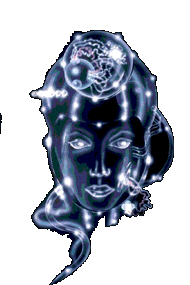Website Sections
- Home Page
- Library of Eugenics
- Genetic Revolution News
- Science
- Philosophy
- Politics
- Nationalism
- Cosmic Heaven
- Eugenics
- Transhuman News Blog
- Future Art Gallery
- NeoEugenics
- Contact Us
- About the Website
- Site Map
News Categories
- Artificial Intelligence
- Astronomy
- Cyborg
- Eugenics
- Freedom
- Futurism
- Futurist
- Liberty
- Nanotechnology
- NASA
- Spirituality
- Transhuman
- Mesothelioma
Partners




Scientific Method
Any attempt to channel the sexual act requires that society
first dismantle the devilish scaffolding of taboos, phobias,
neuroses, and fetishes that has been erected around human
reproduction.37 Given the fundamental continuity of the human
animal with the entire biological kingdom in general
and with mammals specifically – including such intimately
related species as the higher primates – the revolution in developmental
and molecular biology is resetting the intellectual
climate by conceptualizing human reproduction in accordance
with the principles of animal breeding.
Genetic selection presupposes genetic variation; otherwise
there would be nothing to select from. Heritability is the
yardstick by which both natural and artificial selection are
measured. Heritability scores are mathematical correlations
ranging from 1 (a parental trait is inevitably passed on to the
children) to 0 (the children are no more or less likely to possess
it).
The heritability of economic traits has been intensively
studied for farm animals. For example, milk production is
0.25, yearling body weight in sheep is in the range of 0.2 -
0.59, and feedlot gain in beef cattle is 0.5 - 0.55.38 The heritability
for height among white European and North American
populations is 0.9.39 Using data from twin studies, Thomas
Bouchard and colleagues at the University of Minnesota have
placed the overall heritability of personality at about 0.5.
Heritabilities of social attitudes are even higher: 0.65 for
radicalism, 0.54 for tough-mindedness, and 0.59 for religious
leisure time interests. Occupational interests correlate at
about 0.36.40 One study of monozygotic (identical) and dizygotic
(fraternal) twins showed that monozygotic twins showed
a significantly higher correlation than dizygotic twins for being
frank, active, talkative, gregarious, extroverted, assertive,
calm, self-confident, even-tempered, emotionally stable,
kind, polite, pleasant, agreeable, thorough, neat, systematic,
conscientious, inventive, imaginative, original creative, open
to experience, refined, sophisticated, and flexible. Model-fit
analyses suggested about 40% genetic, 25% shared environmental,
and 35% nonshared environmental influence.
Although the heritability of any trait or combination of
traits can be measured along this same scale, it is the intelligence
controversy which has attracted the most heated attention.
Low estimates of IQ heritability in human populations
are generally on the order of 0.4, with 0.8 being the ceiling for
high estimates.
How to disentangle nature from nurture? The correlation
between the IQ scores of the same person taking the same
test a second time can serve as a benchmark; it is 0.86.42 The
prominent English psychologist Cyril Burt located a number
of identical twins who had been raised separately. In 1966 he
reported an IQ correlation of 0.77 among 53 pairs of identical
twins whom he had studied. When Burt, who died in 1971,
was posthumously accused of having falsified his data, the
purported scandal made for major news. Now, however, a
great deal more research has been done on the topic, and
Burt’s findings have been replicated repeatedly, including
Bouchard’s study of 8,000 twin pairs, which came up with a
correlation of 0.76 for identical twins reared separately and
0.87 for those reared together. 43 In another study of adopted
children, conducted by Sandra Scarr and Richard A.
Weinberg, also at the University of Minnesota, the adoptees’
IQ scores correlated significantly more positively with those
of their biological than with those of their adoptive parents.
Natural selection depends not only on genetic variation
but also on environmental variation. The greater the range of
the two forms of variation, the greater the intensity of selection
– that is, the faster the rate of evolution. For millennia
now, without any knowledge of Darwin’s theory of evolution,
people have been able to pursue artificial selection successfully
in plants and animals by simply breeding the most desirable
individuals with each other under the principle “like
breeds like.” This is still the chief methodology of animal
breeders. When, however, low variation or low heritability
impede selection, modern genetic tools are employed: frozen
semen, separation of male- and female-producing sperm,
su-perovulation, embryo storage and transfer, in vitro fertilization,
and transfer of genetic material.
The use of artificial insemination renders eugenic measures
applied to males far more effective than to females. For
example, by employing modern techniques a bull can theoretically
be made to produce 200,000 breeding units of semen
per year.45 One bull already has 2.3 million granddaughters.46
Furthermore, sperm can be frozen for long-term storage and
later use.
If there is no shortage of premium-quality sperm, the
same is also true of eggs. Only a tiny percentage of the eggs
created in human females at birth are ever fertilized. In vitro
fertilization, with resulting embryos implanted in a womb
other than that of the original mother, would make it possible
to achieve a revolution in population quality without creating
a quantitative bottleneck.
Cloning is a still newer technique. During the process a
genetically identical copy of a biological organism is produced
by asexual means. Cloning is common in nature. Any plant
that can grow from a cutting, or animal tissue that can reproduce
itself in a Petri dish, in the process also produce
clones.
During laboratory cloning (“nuclear transfer”), the genetic
code of an individual organism is inserted into an egg
that has been stripped of its own nucleus, and that egg is
then implanted in the womb of a “birth mother,” just as is already
done in cases of in vitro fertilization. The child who is
born is the donor’s identical twin. The first animal clones
were produced in the late 1950s. In 1993 US researchers experimentally
cloned a human being as a possible treatment
for infertility, but the experiment raised a storm of criticism.
The cloning of the sheep “Dolly” did not take place until 1996.
Other mammals already cloned by scientists include horses,
dogs, rabbits, cows, goats, deer, pigs, cats, rats, and mice.
The current debate on cloning is focused on therapeutic
cloning. For example, it may be possible in the future to clone
cells from a person suffering from cardiac insufficiency, develop
those replacement cells into heart muscle, and then transplant that muscle back into the same patient without
fear of rejection.
The real issue, however, is reproductive cloning – conceiving
babies who will be brought to term and who will enter
the general population as independent persons. Reproductive
cloning can be pursued for two reasons: first, as a device to
combat infertility, and second, to enrich the human gene pool.
I refer here to the latter as “eugenic cloning.” Cloned embryos,
as well as embryos produced during in vitro fertilization,
could be implanted in a womb which might be human,
animal, or even artificial. “We can see all too clearly where
the train is headed, and we do not like the destination,” wrote
Leon Kass, chief of George W. Bush’s Bioethics Council.47 Revealingly,
Kass, who is an observant conservative Jew, has
also come out against the dissection of cadavers, organ transplantation,
in-vitro fertilization, cosmetic surgery, and sexual
liberation. Virginia Postrel, editor-at-large of Reason magazine,
responded to the views expressed by Kass by commenting
that “This isn’t about the 20th century. It’s about the
16th
Much of the criticism of cloning stems from a fundamental
misunderstanding – that there is an intent to produce a
race of identical creatures lacking any and all individuality.
This is definitely not the case, and no such practice has ever
been advocated. Rather, it is the expectation that persons
born as the result of a cloning process would enter into normal
sexual relations with the vastly greater population of individuals
born as the result of traditional sex and would multiply
in the traditional fashion, thus increasing the frequency
of advantageous genes in the following generations
Despite some well-publicized successes, there remain a
number of difficulties to be worked out, and the failure rate is
still high. For example, cloned animals often have abnormal
placentas – a factor that affects size and survival. Part of the
problem evidently lies in abnormalities in gene expression.
Much of the resistance to cloning comes from religious
groups, but is not limited to them. Aside from a fully legitimate
fear that we may still not be knowledgeable enough to
proceed immediately to human cloning, the resistance to cloning
per se is startlingly reminiscent of the traditional argument
against evolution – that it is “an assault on human dignity.”
That was precisely the text and heading of an open letter
addressed to President George W. Bush in the Washington
Times in January, 2002, signed by 29 conservative political
and religious leaders.
The media have waged an energetic campaign against
cloning. We have examples in the 1976 novel, The Boys from
Brazil by Ira Levin, made into a film starring James Mason
in 1978, and most recently in 2002, with the appearance of
Star Wars Part II: Attack of the Clones. There is even a canard
as to whether human cloning methods might be patentable.
The New York Times is entirely correct: “Opposition to
reproductive cloning is universal in Congress, and if any
senator or congressman secretly harbors a more benign view
of the procedure, the chance that he or she will express that
opinion publicly is absolutely zero. In 2001, the House of Representatives
voted to ban all forms of cloning, but the Senate
resisted a total disallowment. Congress has thus resolved to
criminalize reproductive cloning, even though Congress’s
unanimity in this area is not shared by everyone in the scientific
and scholarly community. According to the Wall Street
Journal, “some diplomats said they believe the U.S. stand in
the U.N. was primarily intended to score domestic political
points with religious conservatives and antiabortion activists. But such moods are hardly limited to the United
States. On November 6, 2003, by a 80-79 vote, with 15 abstentions,
the United Nations narrowly resolved to delay by
two years a vote supported by the United States and the
Vatican to outlaw both therapeutic and reproductive cloning.
A number of other countries supported a Belgian proposal to
ban reproductive cloning while permitting therapeutic cloning.
Animal breeding methods usually amount to producing a
specific type on the basis of very strict characteristics. The
same is true for plant selection, in which a rich variety of
strains is usually replaced by a few monocultures. Nothing of
the sort would be appropriate for human populations. Human
selection, as proposed by proponents of eugenics, would be
aimed at a far more limited reduction in genetic variance. Diversity
is viewed not simply as a great source of strength but
also as an integral part of what we are and want to be. A certain
reduction of this variability, on the other hand, is the
mathematical goal. Eugenicists argue that even a very significant
channeling of motherhood and a far more stringent
selection among men would still leave billions of people reproducing.
By comparison, all thoroughbred race horses stem
from three Middle Eastern stallions, and natural selection
can be even more draconian.
Transtopia
- Main
- Pierre Teilhard De Chardin
- Introduction
- Principles
- Symbolism
- FAQ
- Transhumanism
- Cryonics
- Island Project
- PC-Free Zone





More News
- Aerospace
- Astro Physics
- Beaches
- Eco System
- Gene Therapy
- Genetic Engineering
- Genetic Medicine
- Health Care
- Human Genetics
- Islands
- Libertarian
- Libertarianism
- Medical School
- Medicine
- Mind Upload
- Molecular Medicine
- Moore's Law
- Nano Engineering
- Nano Medicine
- Planetology
- Red heads
- Space Flight



